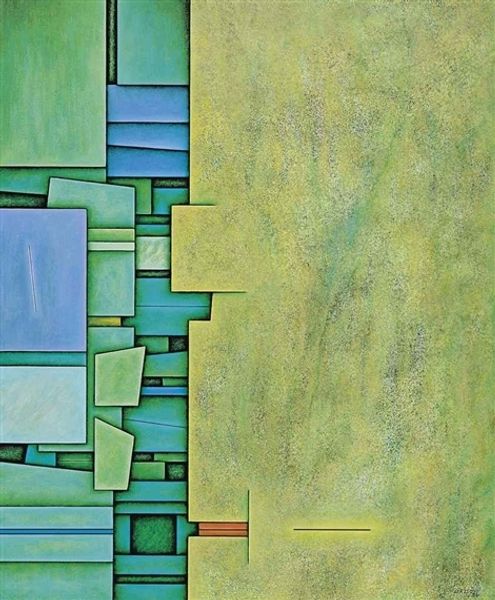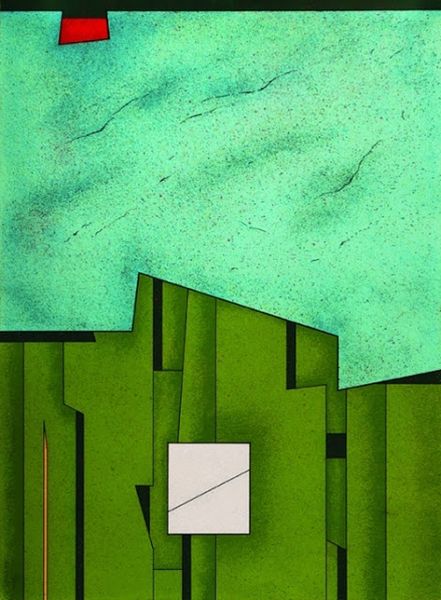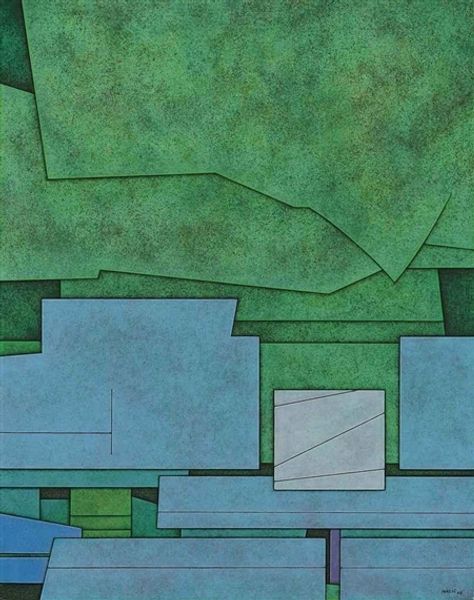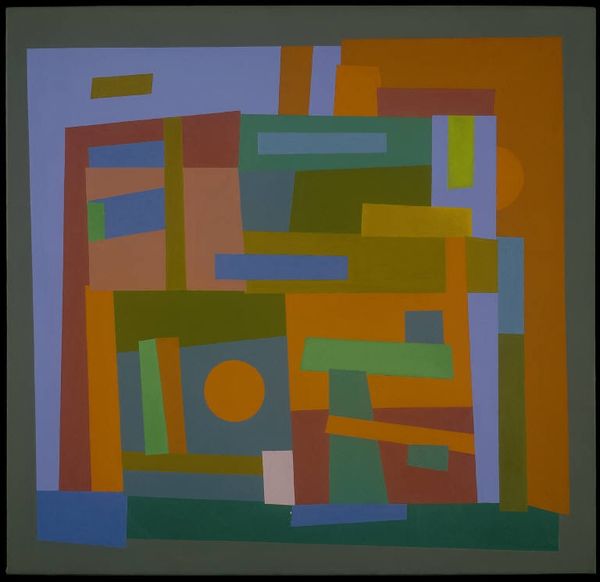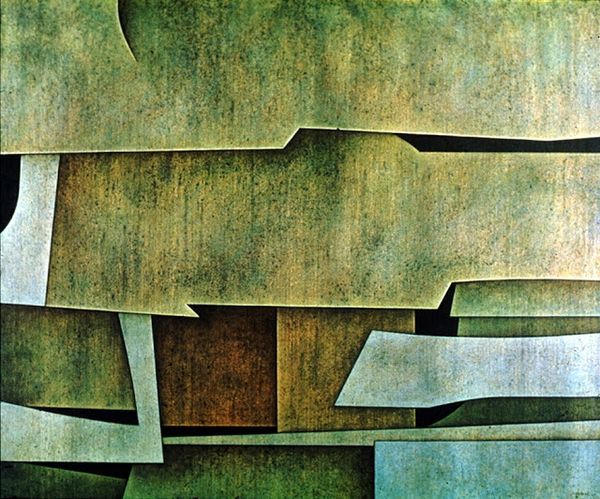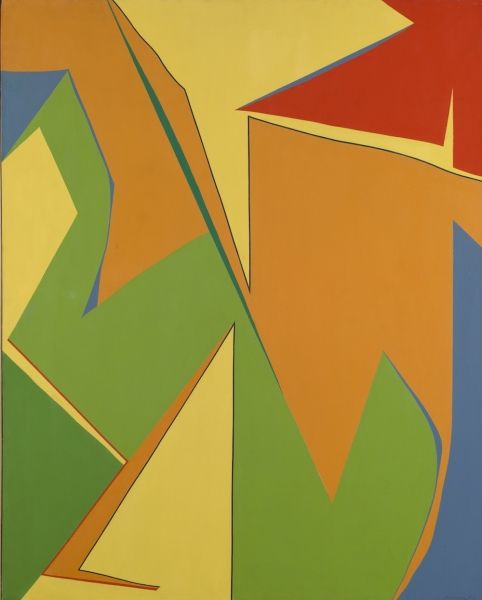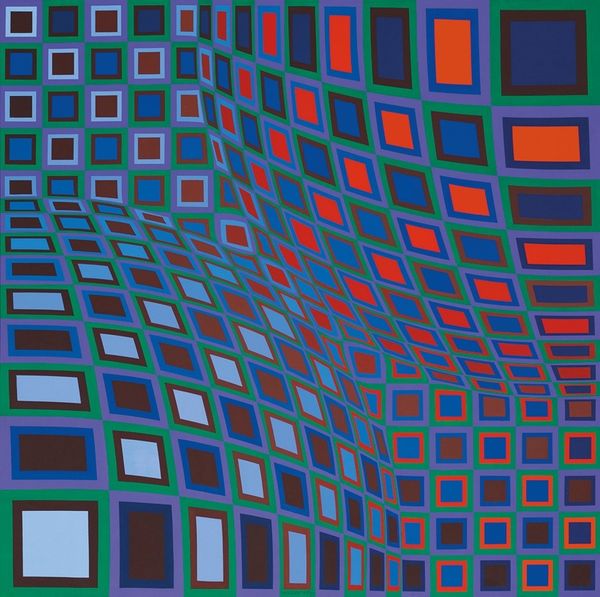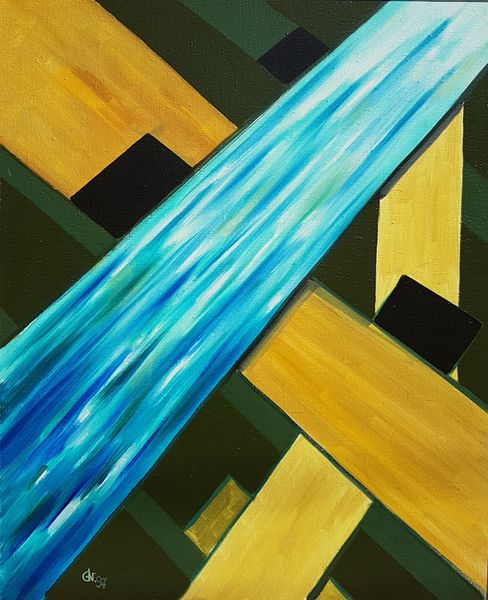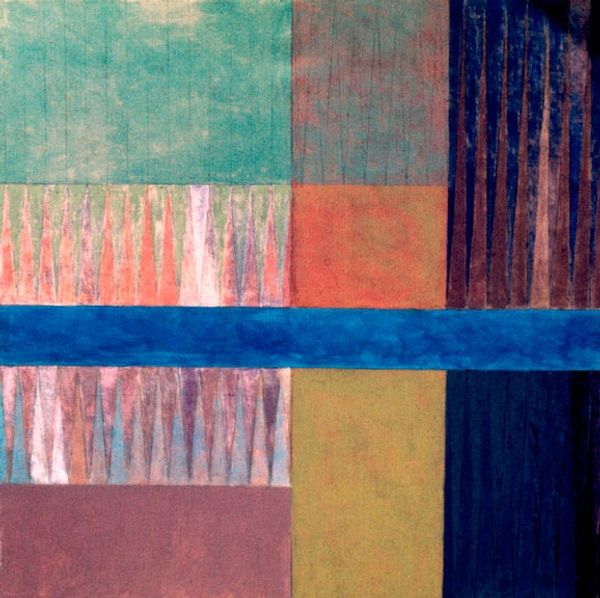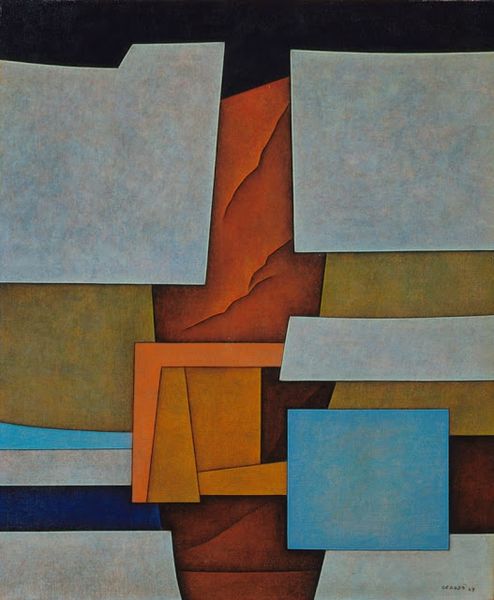
Copyright: Gunther Gerzso,Fair Use
Editor: So, this is Gunther Gerzso's *Paisaje Espejismo*, painted in 2000 using acrylic on canvas. It’s a really interesting composition of geometric shapes. What strikes me most is how the blue and green hues interact, creating this feeling of depth and illusion. What do you see in this piece? Curator: It’s tempting to view abstract works in isolation, but Gerzso was deeply engaged with Mexican history and the pre-Columbian past. This work, to me, reflects that. The carefully constructed geometric forms can be read as a coded language. Given the title, how might this ‘landscape mirage’ function as a visual metaphor for cultural memory, distorted and fragmented over time? Do you see echoes of ancient Mesoamerican architecture? Editor: I see the geometric abstraction more clearly now. Maybe the layers suggest palimpsests – where traces of older writings are visible on newer ones? Like seeing layers of culture. Curator: Exactly! And think about the accessibility of art in shaping public perception. Gerzso's work allows the viewer to participate in interpreting history rather than being passively told what to think. But does this kind of abstraction run the risk of alienating viewers, preventing meaningful engagement? Editor: I think the accessible colors and balanced composition helps to draw you in, regardless of your knowledge of art history. It’s inviting, but prompts deeper thought. I am left reflecting on Gerzso’s modern abstraction incorporating the echoes of Mexican pre-Columbian culture. Curator: Precisely. This piece invites us to consider the complex dialogue between modernism and cultural heritage. Seeing art as deeply embedded within historical and socio-political contexts changes one's perspective.
Comments
No comments
Be the first to comment and join the conversation on the ultimate creative platform.
